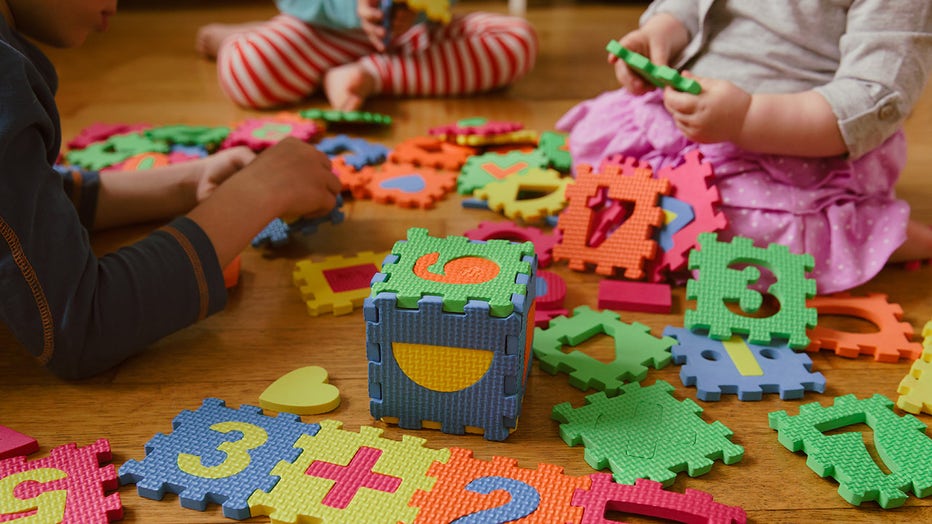Child care now costs more than a mortgage, study finds
A recent study finds that child care costs are now outpacing inflation, with the typical American family barely affording both a house and child care in most of the country’s largest cities.
Affordability guidelines suggest housing should cost no more than 30% of a family’s monthly income, and the U.S. Department of Health and Human Services recommends child care should cost no more than 7% of their monthly income.
But Zillow’s analysis found that the typical household well exceeds these guidelines with a mortgage payment and child care now taking up at least 66% of an average household’s monthly income in 31 of the 50 cities analyzed.
According to the data, the average American family can expect to spend $1,984 per month on child care and $1,973 on a monthly mortgage payment (based on a 10% down payment, interest rate of 6.61%, and the typical home price in each metro).
Cost burden highest in Los Angeles, San Diego
The cost burden is even more pronounced in the most expensive markets.

File (Nadezhda1906 / iStock / Getty Images Plus)
In Los Angeles, prospective buyers would need to spend 121% of their income on a new mortgage and child care. In San Diego, families would need to spend 113%.
"The American Dream used to include building a family and owning a home, but this statistic has me wondering whether the cost of childcare and the lack of support for working mothers has reduced a mother’s ‘American Dream’ down to whether she can afford to have children at all," Gretchen Salyer, the founder of childcare app June Care, told FOX Television Stations.
Percentage income spent on housing, child care
- Los Angeles, CA: 121%
- San Diego, CA: 113%
- San Jose, CA; 109%
- San Francisco, CA: 106%
- Oxnard, CA: 100%
- Riverside, CA: 93%
- Boston, MA: 92%
- Seattle, WA: 92%
- Providence, RI: 91%
- Fresno, CA: 87%
- Sacramento, CA: 85%
- New York, NY: 83%
- Bridgeport, CT: 83%
- Portland, OR: 82%
- Tucson, AZ: 82%
Child care costs surge
After two years of receiving federal subsidies, 220,000 child care programs across the country were cut off from funding last year. The largest investment in child care in U.S. history, the monthly payments ranged from hundreds to tens of thousands of dollars, and stabilized the industry during the COVID-19 pandemic.
Due to the federal funding cut, childcare providers are also finding it harder to keep their doors open.
Sayler said she has been working to tackle the closures and escalating childcare costs by offering families access to affordable child care through her app June Care, which connects families looking for childcare with stay-at-home moms who can care for their kids.
"June Care was started based on my own personal experience as a mom, but really born out of the pandemic." she told FOX. "June Care connects parents looking for childcare with stay-at-home parents who can care for their kids. Our mission is ‘moms supporting moms in their most important work,’ whether that work is in the home or outside of the home."
RELATED: Make six figures? Here’s how much you must earn to afford a house in 2024
Another study, published last year, found that the increased day care costs may be driving some parents out of the workforce altogether in order to look after their children. Specifically, among families that paid for child care, there were fewer dual-income households in 2023 than in 2019.
RELATED: Child care costs are highest in these cities, data reveals
In addition, families with child care payments were spending at a slower pace than the rest of the population, the data revealed. Yet, they were also dipping into savings at a faster rate.
Housing affordability
This data also comes as the housing market faces an affordability crisis, with the typical U.S. home value sitting at 41% above pre-pandemic levels. This rapid home price appreciation, coupled with mortgage rates that recently hit decades-long highs, means many home buyers must make trade-offs in order to afford other necessary expenses, such as child care.
RELATED: Whopping 78% of aspiring homeowners say they can’t afford the American dream
In 2019, the cost of housing and child care was 50% of the typical household’s income. In 2024, the average U.S. home value is 41% above that, according to Zillow.
A new survey released by Bankrate found that, while an overwhelming majority of Americans agreed homeownership was the most common American Dream, a whopping 78% of aspiring homeowners said they can’t afford it.
This story was reported from Los Angeles.

